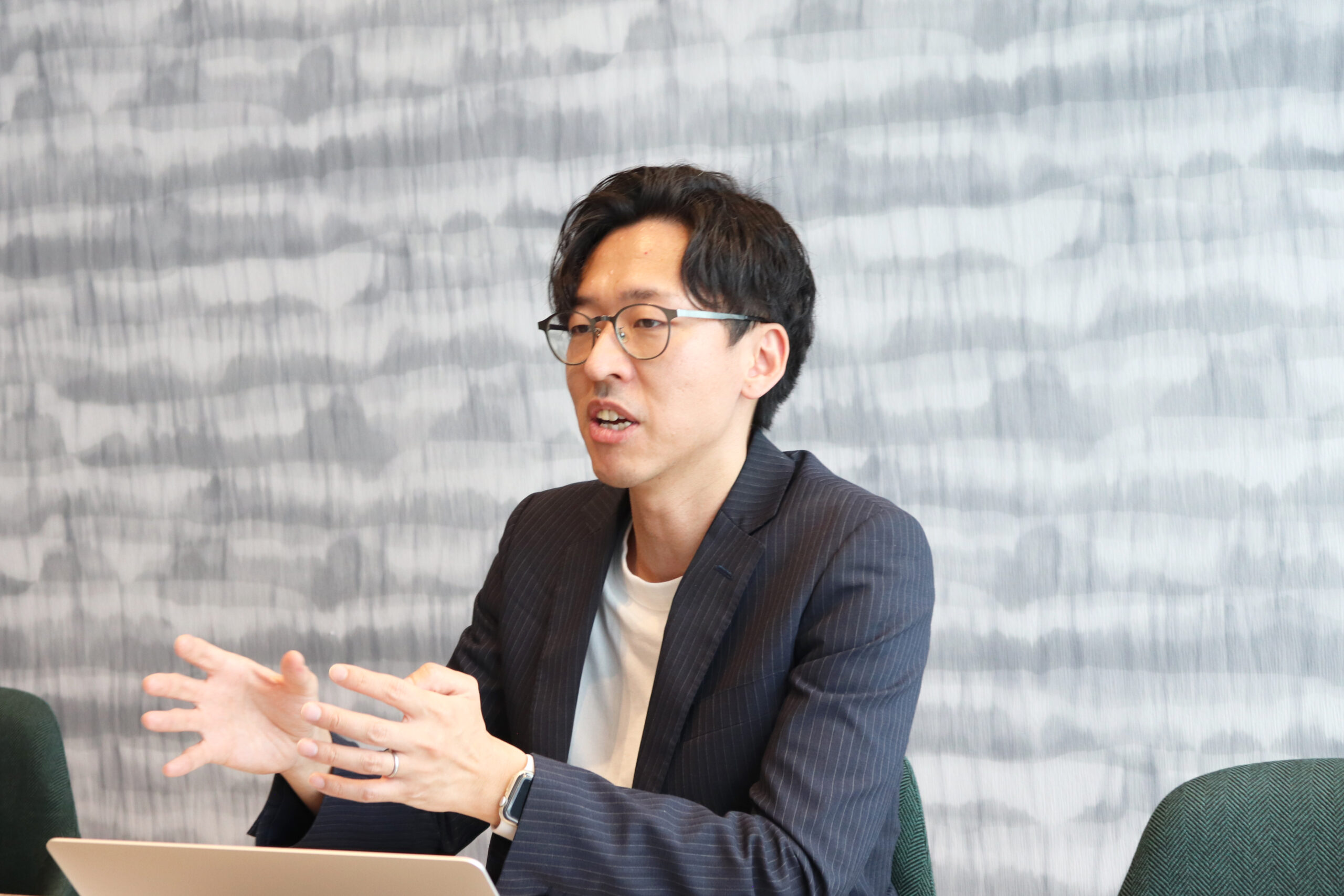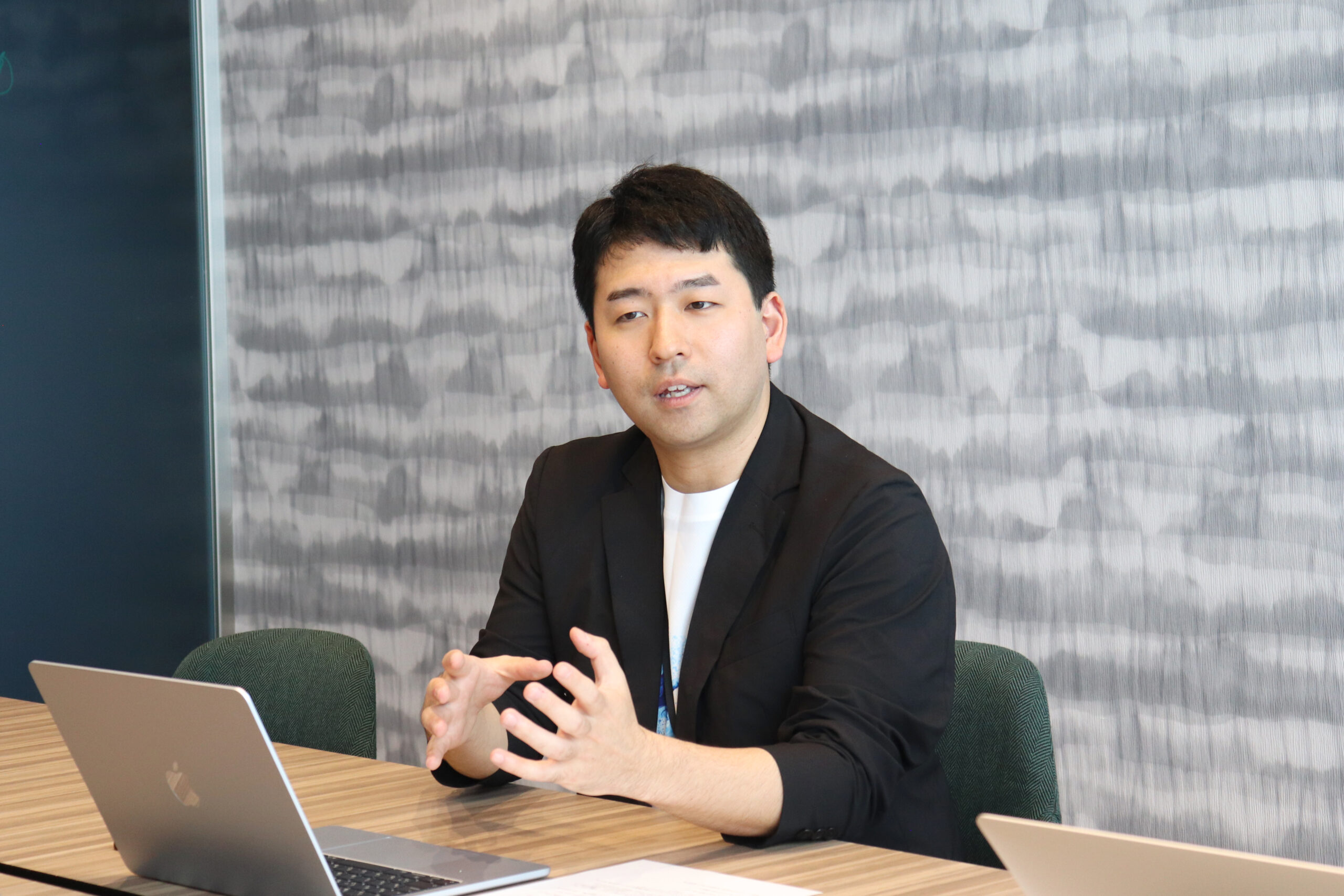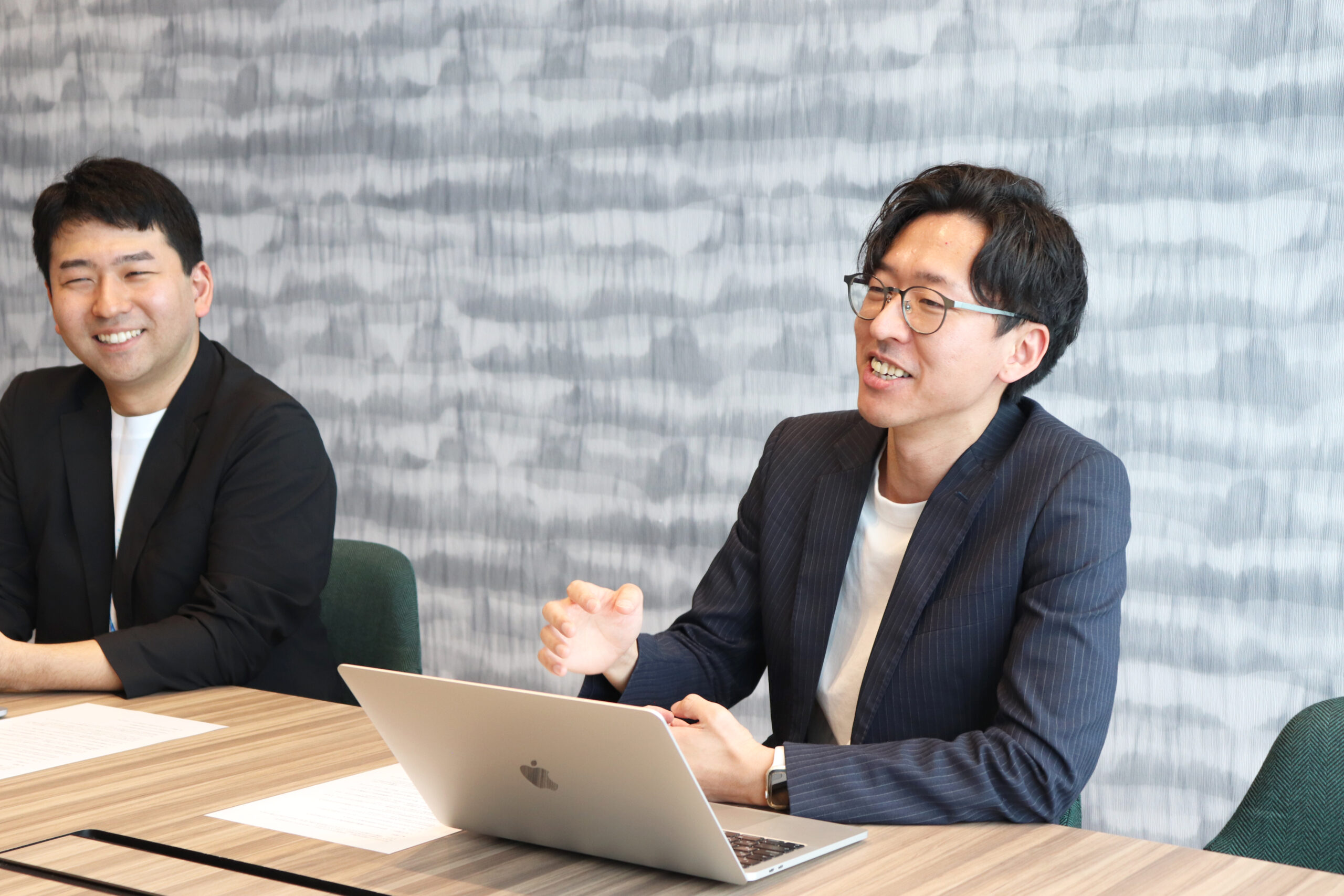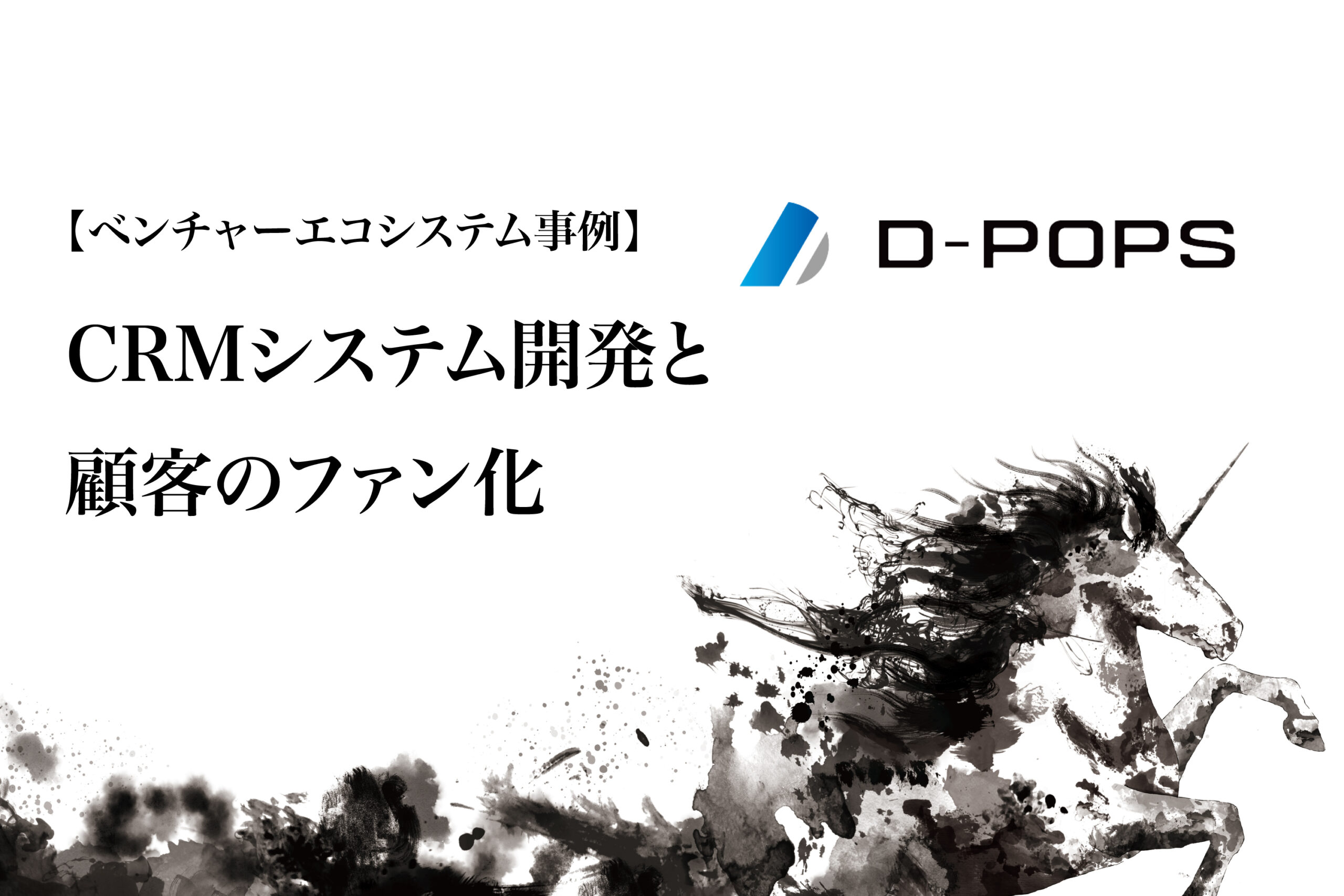
Tackling the Development of the Next Generation to Further Invigorate Japan’s IT Sector
D-POPS GROUP has 23 group companies that we call partners (at the time of publication).
For this article, we interviewed Co-president & COO Akio Nishikawa and Co-president & CFO Yorito Matsutani of @Solution, which joined D-POPS GROUP in 2021. (This interview was conducted in April 2025.)
This is the latter part of the interview. To read the first part, click the link below.
https://d-pops-group.co.jp/en/column/atmarksol-interview-first-part/
◆Greatest Strengths and Features
Sugihara:
The role of the engineer is becoming increasingly sophisticated. Coding itself may no longer be necessary, but what is important is the ability to determine the required program structure, the ideal interface, and the specifications of the final product, and finally coordinate all of those together. In that regard, what is @Solution’s greatest strength or distinguishing feature?
Nishikawa:
This goes back to our two businesses we described at the start of this interview, but our strength lies in our ability to build and propose solutions not just for surface-level applications, but also for their underlying infrastructure.
Ultimately, all systems and services rest on an infrastructural foundation, so our capability to offer total solutions starting from the base infrastructure is our key advantage.
Furthermore, we have members who specialize in direction and project management. This ensures we can fully engage with what the client wants and effectively communicate that to our engineers.
@Solution is broadly seen as a System Integrator (SIer), and people often have the impression that it’s difficult to communicate with SIers, since they are mostly staffed by engineering-type people. However, in our case, people say “It’s easy to consult with @Solution because they have project managers.” So, this is definitely another of our strengths.
Sugihara:
That kind of service is definitely high in demand. No matter how widespread AI becomes, it will always be essential to display warmth and kindness, be able to read the room, and other things that only humans can do. The realm of communicating from person to person is where AI should be differentiated from humans.
Nishikawa:
I agree. In foreign companies, especially those overseas, engineers are considered almost god-like professionals who only need to write code well. They never attend project briefings, but that’s acceptable as long as their productivity is high.
However, we prioritize communication and want our clients to know that we value it. That is why some of our members are dedicated to direction and project management.

Sugihara:
What scale are your typical client companies?
Matsutani:
We don’t have a size limit either way, so we handle projects for both large corporations and start-ups that have recently launched their own services. By industry, most of our contract development supports BtoC-oriented services.
Our SES business has usually seen larger-scale projects since the beginning.
Sugihara:
What are the main reasons companies come to @Solution with projects? For example, is it because they’re looking to outsource coding, or because they have a lack of manpower?
Nishikawa:
It’s typically the latter. Clients often seek us out due to a lack of manpower, and they also find us through networking. We are increasingly involved in projects where we partner with companies that simply do not have engineers in-house.
For instance, many clients who operate their own services have internal teams for promotion and marketing but not a single development engineer on payroll.
They might have had a specific app running for about ten years, and because they lack engineers, they were relying on various vendors. We are now seeing an increase in cases where we are taking over and managing these projects.
◆Recruitment
Sugihara:
Speaking of which, the general consensus is that Japan is facing an engineer shortage.
How is @Solution approaching recruitment in light of this?
Matsutani:
In engineer recruitment, the biggest salary bubble was around two years ago, when engineers were jumping into the companies that offered the highest salaries. Then, with the emergence of AI and the conversation about whether engineers will be needed in the future, things calmed down somewhat.
However, there is still a persistent shortage of engineers, so salaries remain relatively high compared to other industries.
After 20 years of trying various methods at @Solution, we’ve found that new graduates are the best fit for our hiring patterns. The cycle of bringing in new grads and providing proper training works well for us, so we are focused on this area.
Last year, we ran an internship program. These were not short-term, but year-round long-term internships, totaling about 20 people. They would work on projects, sometimes for a few hours a week and sometimes full-time.
We would love for these excellent students to join us, but recently, so many of them are talented enough that they go on to work for companies like CyberAgent, DMM, and IBM.
Sugihara:
How did such talented students come to apply for an internship at @Solution?
Matsutani:
After receiving their feedback, we found that last year, there was an overall trend among engineers toward using the more “packaged” technologies like Flutter for mobile. However, students with some experience wanted to work on in-house projects through a lab-based or contract development model like ours, where they could really get their hands dirty writing native code.
The more ambitious students had a strong desire to personally experience writing code from scratch, which is why they applied for our internship.
During the initial orientation, we tell them this: “Since our management philosophy is ‘Developing the Next Generation’, we want you to gain extensive experience here and become a successful professional.” We believe that Japan’s IT sector still has plenty of room to grow compared to other countries, so an increase in highly skilled IT talent benefits the whole country. We look forward to connecting with them as future partners.

Sugihara:
Ah, so this is where your management philosophy truly comes to life. It would be fantastic to see cases where students who interned at @Solution thrive as skilled IT professionals and later rejoin the company a few years down the line.
What are your future recruitment strategies?
Nishikawa:
We currently have about 35 engineers, but we plan to increase that number.
Our maximum goal is to reach around 200 members within the next 10 years.
Sugihara:
That’s a great target! Will you be hiring mid-career professionals as well as new graduates?
Matsutani:
Yes. More specifically, we intend to focus on hiring inexperienced individuals.
We are looking for young people, especially in their 20s, who are studying at coding schools or even those who are self-taught. Since becoming an engineer requires interest, curiosity, and passion, we want to hire those who are motivated and studying on their own initiative.
◆“Realizing a Venture Ecosystem”
Sugihara:
D-POPS GROUP’s vision is to increase the number of growing startup companies that bring about societal transformation. In short, we aim to “realize a Venture Ecosystem”. What are your thoughts on this Venture Ecosystem?
Nishikawa:
First and foremost, I feel incredibly fortunate to be part of this community every day. Particularly on the financial side of things, D-POPS GROUP provides us with an extremely encouraging and reassuring environment.
While managing finances is originally a huge part of running a company, the assistance we receive as a part of the group allows us to concentrate entirely on our core business, so we are truly grateful.
Without this environment, we wouldn’t even be able to discuss recruitment plans or consider strategic investments. We feel incredibly supported.
Matsutani:
I have essentially the same impression as Co-president Nishikawa. I believe this is a truly unique and interesting environment and structure. The individual members of the Venture Ecosystem are relentless challengers, yet they are incredibly kind, gentle, and cooperative. It feels like we are comrades, but at the same time we also have a healthy competition, and it’s rare to find both of those deeply rooted in a single culture.
Here, we can pursue many challenges, and the structure for taking on those challenges is already in place. For example, having advisors readily available for consultation is a huge benefit. I am deeply thankful to be in this environment.
Sugihara:
That’s very true. D-POPS GROUP emphasizes two things regarding challenges.
First, to increase the probability of success for those who take them on. We strive to create mechanisms and environments that—even if they aren’t perfect—are just what people need.
Second, if an endeavor doesn’t succeed, they can try again within the Ecosystem. We have many examples of successful re-attempts.
Matsutani:
Exactly. There is internal competition, mutual assistance, and abundant opportunities to generate group synergy, which is a great benefit.
When most people hear M&A, they picture strict supervision from the head office, but there is virtually none of that in D-POPS GROUP. We have meaningful support systems without suffering from someone breathing down our necks.
◆Group Synergy (Collaboration among the 3 IT Companies)
Sugihara:
I believe President Goto prioritizes respecting the will of each company’s managers, working with them to build up those companies, because he can understand those business leaders’ feelings better than anyone.
Speaking of the Venture Ecosystem, I heard that @Solution recently started a business collaboration with Techbeans and Idealump. How did this three-way partnership come about, and what is its current status?
Matsutani:
Originally, the companies in our group who had IT engineers were only @Solution and Techbeans, and we were already collaborating, with us joining projects accepted by Techbeans, and vice-versa. When Idealump joined the group last year, there was one more IT engineering company, allowing us to formalize the collaboration further.
So, we currently have various forms of partnership: all three companies are involved in certain projects; we hold joint proposals; sometimes two out of the three collaborate between each other. We are also planning to create opportunities for members to get to know each other and host joint study sessions for all three companies. We plan to accelerate these efforts going forward.
Sugihara:
Speaking of study sessions, there was a business presentation and Q&A session recently held by BLUEISH, one of D-POPS GROUP’s investment companies. I remember BLUEISH’s President Tameto having a very engaging discussion with Co-president Nishikawa at the social gathering afterward. Are there any insights you’ve gained from members of the Venture Ecosystem like that?
Nishikawa:
It was a very lively discussion! President Tameto had quite a big impact on me. His presentation style was memorable, but the actual business content was a shock: he explained how they originally did contract work but pivoted to AI based on industry trends, specifically focusing on AI Agents.
AI utilization, or AI-driven development as it’s often called now, was an area where I honestly felt my knowledge was lacking. While I could understand some of what President Tameto was saying, I had a strong realization that I needed to do more research.
From that point on, I began to change the focus of my own input. I feel that the BLUEISH study session directly led to my idea of wanting to offer consultation services that utilize AI. It was an extremely valuable learning experience.

◆5-Year Goals and How to Get There
Sugihara:
I’m glad the session was beneficial. We will continue to create opportunities for collaboration within the Venture Ecosystem.
Could each of you share where you think @Solution will ideally be in five years and the challenges you face in reaching it?
Nishikawa:
First of all, from a financial standpoint, I believe sales are important. @Solution is currently a ¥300 million company, and I want that number to become ¥3 billion.
To achieve that, all members, including myself, must level up our skills. We will focus on applying AI and lab-based development, and continue to work on improving our skills while acting as project partners for our clients.
The most important thing, and I feel this strongly, is for the two of us to grow as leaders.
The reason I feel this way stems from attending the all-hands meeting for Findstar GROUP about two years ago, after being invited by President Goto. At that meeting, Findstar GROUP’s President Naito—who is also the Non-Executive Director of D-POPS GROUP—said, “The growth of a company, or how far it can take a leap, is truly limited by its top leader.”
That message really stuck with me. We tend to focus on employee growth, but I feel that unless we, the leaders, raise our own ceiling first, the company’s ceiling will not rise. Therefore, our initial focus is on our own growth.
Matsutani:
I want us to become the hub for digital talent within D-POPS GROUP. I strongly want our company, as well as Idealump and Techbeans, to become the go-to place that everyone consults when they want to pursue anything digital.
The prerequisite to achieving this is to continuously learn and absorb knowledge, as this ecosystem offers many learning opportunities—especially for business leaders—and then to produce more output as a result. For me personally, I want to create a greater sense of community, so I will need to act on that premise as much as possible.
◆Message to Readers Visiting Our Website
Sugihara:
Finally, could you each offer a closing message to the readers visiting our website?
Nishikawa:
Thank you for reading our interview. We are a team of system and IT experts, so if you need anything IT-related, please think of us first. And let’s go out for a drink sometime, ha ha!
Matsutani:
D-POPS GROUP is a truly fascinating group of people, so if you are interested, please feel free to visit us in Shibuya Hikarie!
Interview conducted by D-POPS GROUP’s advisor Genta Sugihara.
@SOLUTION
Co-president & CEO: Katsuto Masuda
Co-president & COO: Akio Nishikawa
Co-president & CFO: Yorito Matsutani
Address: 32F Shibuya Hikarie, 2-21-1 Shibuya, Shibuya-ku, Tokyo
Established: July 2005
Website: https://atmarksol.jp/






